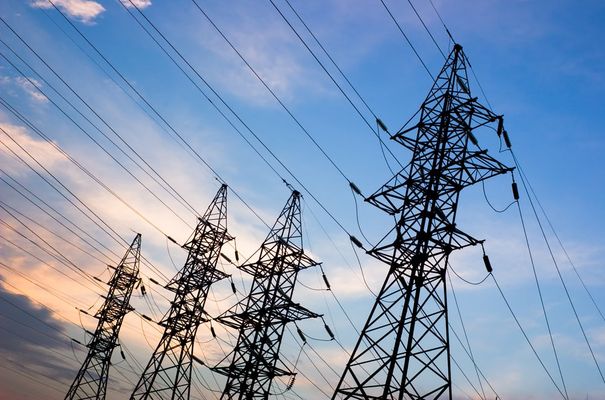4.5.2
Power & Efficiency
Power
Power
The "energy transferred per second" is equivalent to saying "the rate of energy transfer". Both are definitions for power.


Rate of energy transfer
Rate of energy transfer
- The rate at which energy is transferred from one form to another is called power.
- This is equivalent to saying the energy transferred per second.
- The energy transferred is also known as the work done, W.
- So, power can also be described as the work done per second (or the rate of doing work).


Equation
Equation
- Power is the rate of doing work.
- Power = work done ÷ time taken


Units
Units
- Power is measured in Watts (W).
- 1 Watt is defined as 1 Joule transferred per second.


Force × velocity
Force × velocity
- Power is also equal to the force applied times the velocity of the object the force is applied to.
- This equation can be more useful if you're given the speed and not the distance travelled.
Efficiency
Efficiency
When energy is transferred, there are some losses. For example, some energy may be dissipated as heat or sound.


Useful energy
Useful energy
- Efficiency is the fraction of energy that is used for something useful.
- The higher the efficiency, the better.
- Efficiency is calculated by:
- Efficiency =
- A kettle supplied with 50 W of power and converts 40 W to heat water has an efficiency of .


Percentage
Percentage
- Efficiency can also be expressed as a percentage:
- Efficiency (%) =
- A kettle supplied with 50 W of power and converts 40 W to heat water has an efficiency of 80%.
1Physical Quantities & Units
2Measurement Techniques
3Kinematics
4Dynamics
4.1Momentum & Newton's Laws of Motion
4.2Non-Uniform Motion
4.3Linear Momentum & Conservation
4.4Force, Density & Pressure
4.4.1Fields
4.4.2Force in Uniform Fields
4.4.3Friction
4.4.4Buoyancy
4.4.5Terminal Speed
4.4.6End of Topic Test - Acceleration Due to Gravity
4.4.7Centre of Mass
4.4.8Forces & Equilibrium
4.4.9End of Topic Test - Scalars & Vectors
4.4.10Moments
4.4.11End of Topic Test - Moments & Centre of Mass
4.4.12Density
4.4.13Pressure
4.5Work, Energy & Power
5Gravitational Fields
5.1Gravitational Fields (A2 only)
6Deformation of Solids
7Thermal Physics
7.1Thermal Physics
7.1.1Temperature
7.1.2Measuring Temperature
7.1.3Ideal Gas Law
7.1.4Ideal Gases
7.1.5Boyle's Law & Charles' Law
7.1.6Molecular Kinetic Theory Model
7.1.7Molecular Kinetic Theory Model 2
7.1.8Thermal Energy Transfer
7.1.9Thermal Energy Transfer Experiments
7.1.10End of Topic Test - Thermal Energy & Ideal Gases
7.1.11First Law of Thermodynamics
8Oscillations
8.1Simple Harmonic Motion
8.2Waves
8.2.1Progressive Waves
8.2.2Intensity of Waves
8.2.3Wave Speed & Phase Difference
8.2.4Longitudinal & Transverse Waves
8.2.5End of Topic Test - Progressive Waves
8.2.6Electromagnetic Waves
8.2.7Doppler Effect
8.2.8Sound Waves
8.2.9Measuring Sound Waves
8.2.10End of Topic Test - Waves
8.2.11Ultrasound Imaging
8.2.12Ultrasound Imaging 2
9Communication
9.1Communication Channels
9.2Digital Communication
10Electric Fields
10.1Electric Fields
11Current Electricity
11.1Current Electricity
11.1.1Basics of Electricity
11.1.2Mean Drift Velocity
11.1.3Current-Voltage Characteristics
11.1.4End of Topic Test - Basics of Electricity
11.1.5Resistivity
11.1.6End of Topic Test - Resistivity & Superconductors
11.1.7Power and Conservation
11.1.8Microphones
11.1.9Components
11.1.10Relays
11.1.11Strain Gauges
12Magnetic Fields
12.1Magnetic Fields
13Modern Physics
13.1Quantum Physics
13.1.1The Photoelectric Effect
13.1.2The Photoelectric Effect Explanation
13.1.3End of Topic Test - The Photoelectric Effect
13.1.4Collisions of Electrons with Atoms
13.1.5Energy Levels & Photon Emission
13.1.6Wave-Particle Duality
13.1.7End of Topic Test - Absorption & Emission
13.1.8Band Theory
13.1.9Diagnostic X-Rays
13.1.10X-Ray Image Processing
13.1.11Absorption of X-Rays
13.1.12CT Scanners
13.2Nuclear Physics
13.2.1Rutherford Scattering
13.2.2Atomic Model
13.2.3Isotopes
13.2.4Stable & Unstable Nuclei
13.2.5A-A* (AO3/4) - Stable & Unstable Nuclei
13.2.6Alpha & Beta Radiation
13.2.7Gamma Radiation
13.2.8Particles, Antiparticles & Photons
13.2.9Quarks & Antiquarks
13.2.10Particle Interactions
13.2.11Radioactive Decay
13.2.12Half Life
13.2.13End of Topic Test - Radioactivity
13.2.14Nuclear Instability
13.2.15Mass & Energy
13.2.16Binding Energy
13.2.17A-A* (AO3/4) - Nuclear Fusion
Jump to other topics
1Physical Quantities & Units
2Measurement Techniques
3Kinematics
4Dynamics
4.1Momentum & Newton's Laws of Motion
4.2Non-Uniform Motion
4.3Linear Momentum & Conservation
4.4Force, Density & Pressure
4.4.1Fields
4.4.2Force in Uniform Fields
4.4.3Friction
4.4.4Buoyancy
4.4.5Terminal Speed
4.4.6End of Topic Test - Acceleration Due to Gravity
4.4.7Centre of Mass
4.4.8Forces & Equilibrium
4.4.9End of Topic Test - Scalars & Vectors
4.4.10Moments
4.4.11End of Topic Test - Moments & Centre of Mass
4.4.12Density
4.4.13Pressure
4.5Work, Energy & Power
5Gravitational Fields
5.1Gravitational Fields (A2 only)
6Deformation of Solids
7Thermal Physics
7.1Thermal Physics
7.1.1Temperature
7.1.2Measuring Temperature
7.1.3Ideal Gas Law
7.1.4Ideal Gases
7.1.5Boyle's Law & Charles' Law
7.1.6Molecular Kinetic Theory Model
7.1.7Molecular Kinetic Theory Model 2
7.1.8Thermal Energy Transfer
7.1.9Thermal Energy Transfer Experiments
7.1.10End of Topic Test - Thermal Energy & Ideal Gases
7.1.11First Law of Thermodynamics
8Oscillations
8.1Simple Harmonic Motion
8.2Waves
8.2.1Progressive Waves
8.2.2Intensity of Waves
8.2.3Wave Speed & Phase Difference
8.2.4Longitudinal & Transverse Waves
8.2.5End of Topic Test - Progressive Waves
8.2.6Electromagnetic Waves
8.2.7Doppler Effect
8.2.8Sound Waves
8.2.9Measuring Sound Waves
8.2.10End of Topic Test - Waves
8.2.11Ultrasound Imaging
8.2.12Ultrasound Imaging 2
9Communication
9.1Communication Channels
9.2Digital Communication
10Electric Fields
10.1Electric Fields
11Current Electricity
11.1Current Electricity
11.1.1Basics of Electricity
11.1.2Mean Drift Velocity
11.1.3Current-Voltage Characteristics
11.1.4End of Topic Test - Basics of Electricity
11.1.5Resistivity
11.1.6End of Topic Test - Resistivity & Superconductors
11.1.7Power and Conservation
11.1.8Microphones
11.1.9Components
11.1.10Relays
11.1.11Strain Gauges
12Magnetic Fields
12.1Magnetic Fields
13Modern Physics
13.1Quantum Physics
13.1.1The Photoelectric Effect
13.1.2The Photoelectric Effect Explanation
13.1.3End of Topic Test - The Photoelectric Effect
13.1.4Collisions of Electrons with Atoms
13.1.5Energy Levels & Photon Emission
13.1.6Wave-Particle Duality
13.1.7End of Topic Test - Absorption & Emission
13.1.8Band Theory
13.1.9Diagnostic X-Rays
13.1.10X-Ray Image Processing
13.1.11Absorption of X-Rays
13.1.12CT Scanners
13.2Nuclear Physics
13.2.1Rutherford Scattering
13.2.2Atomic Model
13.2.3Isotopes
13.2.4Stable & Unstable Nuclei
13.2.5A-A* (AO3/4) - Stable & Unstable Nuclei
13.2.6Alpha & Beta Radiation
13.2.7Gamma Radiation
13.2.8Particles, Antiparticles & Photons
13.2.9Quarks & Antiquarks
13.2.10Particle Interactions
13.2.11Radioactive Decay
13.2.12Half Life
13.2.13End of Topic Test - Radioactivity
13.2.14Nuclear Instability
13.2.15Mass & Energy
13.2.16Binding Energy
13.2.17A-A* (AO3/4) - Nuclear Fusion
Unlock your full potential with Seneca Premium
Unlimited access to 10,000+ open-ended exam questions
Mini-mock exams based on your study history
Unlock 800+ premium courses & e-books